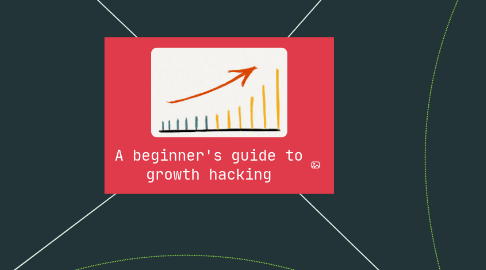
1. The tools
1.1. Key Performance Indicator (KPI)
1.1.1. eg. how many new subscriptions you sell per day, how many people cancelled their subscription per day
1.1.2. have a quick way of seeing it, share it within the c ompany
1.2. Viral coefficient (K)
1.2.1. how many people are brought to your product because of the existing users
1.3. Cohorts
1.4. Segments
1.5. Multi-variate testing (A/B testing)
1.6. Customer acquisition cost (CAC)
1.7. Lifetime value of a customer (LTV)
1.8. General Analytics
1.8.1. eg. Google Analytics
1.9. Event / People based analytics
1.9.1. eg. KISSmetrics, Mixpanel
1.10. Niche analytics
1.10.1. eg. for mobile apps
1.11. Custom analytics
2. Based on the book "The Definitive Guide to Growh Hacking" by Neil Patel & Bronson Taylor
3. What is it?
3.1. It describes tactics and processes to help you increase your numbers.
3.2. The phrase "growth hacker" was coined by Sean Ellis in 2010. "A growth hacker is a person whose true north is growth"
3.2.1. clever, original, or inventive
3.2.2. will use software, databases, API’s, and related tools to grow a startup
3.2.3. must understand technology very deeply to be successful
3.2.4. is on the lookout for system weaknesses which will allow growth
3.2.5. growth should be on the mind of every person working in the company that wants to grow
4. The process
4.1. You can't growth hack a product that people don’t love.
4.2. Product-market fit
4.2.1. If at least 40% of your existing users wouldn’t be “very disappointed” if your product disappeared then you don't have enough product-market fit. This basically means that your product doesn’t solve enough of a pain. It isn’t adequately loved by the users, and the team needs to focus on product more than growth.
4.3. The experiment
4.3.1. Define actionable goals
4.3.2. Implement analytics to track your goal
4.3.3. Leverage your existing strengths
4.3.4. Execute the experiment
4.3.4.1. Write down your hypotheses before you execute an experiment
4.3.4.2. Do not be naive about the resources needed to run the experiment
4.3.4.3. Do not get discouraged by the initial results
4.3.4.4. Learn from success and failure
4.3.5. Optimise the experiment
4.3.6. Repeat
4.4. The funnel
4.4.1. Get visitors
4.4.1.1. The 3 P's of getting visitors
4.4.1.1.1. Pull them in
4.4.1.1.2. Push them in
4.4.1.1.3. Product
4.4.2. Activate members
4.4.3. Retain users
4.4.3.1. 1. Identify trial users most likely to buy
4.4.3.2. 2. More rapidly onboard new users
4.4.3.3. 3. Identify and engage users at risk
